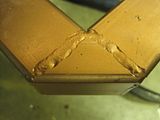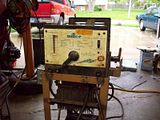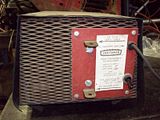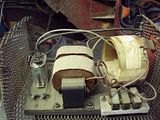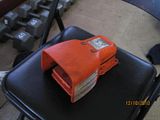I wasnt able to see the link, but have seen pretty much all of the ones floating about....
If one is frugal enough, smooth talker, a good scrounger, a wheeler and dealer, it can be done easily as described or cheaper. Do a search on homemade tig welders and you will find a host of many people that have gotten some decent results with this setup. Offroader guys have been doing similar things like this aswell for along while too.
There is a number of people who have done this on The Welding Web Forum, and many people to help if interested.
If one had the same abilities above and were to use a ac/dc stick welder tombstone type welder with a scratch tig rig you do this in about $200 or potentially less(sometimes people just want to get rid of that ol'welder sitting about and would flog it for about nothing, I have seen this many a time) .
Scratch start welders have been around along time. Basically a stick welder with a non consumable electrode(the tungsten) and gas shield(AR/CO2). Get a TIG lead assembly, AR/CO2 regulator, AR or CO2 bottle of gas, and the welder machine. set to DCEN Good to go.
Aluminum can be done with a scratch start in DC, but you need PURE Helium (not balloon gas but pure as you can get it, I think is called laboratory grade). It is also not cheap at all, like really expensive, several time the price of AR, AFAIK.
These methods dont have a fine adjustability per say( like a pedal on a Miller or other brand name machine) but can use the dimmer or a car headlight/switch dimmer with similar results to vary the input dc voltage.
I have heard people using a battery charger for the 12vdc supply to fields with/with out the dimmer, a 120vac to an electric motor to spin the alternator (with pulleys/belts a specific ratio for speed)
All in all its pretty cool.... Im half way there. I just need a motor and gas and ill be welding, got everthing else.



 Pat
Pat


